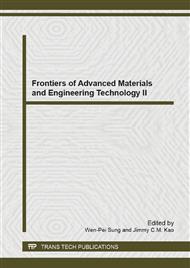p.1513
p.1517
p.1521
p.1525
p.1529
p.1534
p.1538
p.1544
p.1548
Solder Bumps Inspection UsingPrincipal Component Analysis in Active Thermography
Abstract:
A nondestructive inspection system has been developed using the active thermography technology. However the solder defects can not be distinguished directly from the thermal images captured by IR camera because of the heating non-uniformities. The principal component analysis is explored to identify the defects of the solder bumps accurately and effectively. Thermal contrast image is obtained by subtracting source distribution map from the original thermal image. The hot spots corresponding to 16 solder bumps are segmented. The pixels with the thermal contrast values ranging from 0.18°C to 0.20°C are counted, and the maximum and the minimum of the pixel value are found out respectively, which are used in the principal component analysis. The missing bump is identified by the first principal component score. The results show that it is effective using the principal component analysis in active thermography for defects inspection of solder bumps in microelectronic packaging.
Info:
Periodical:
Pages:
1529-1533
Citation:
Online since:
April 2014
Authors:
Price:
Сopyright:
© 2014 Trans Tech Publications Ltd. All Rights Reserved
Share:
Citation:


